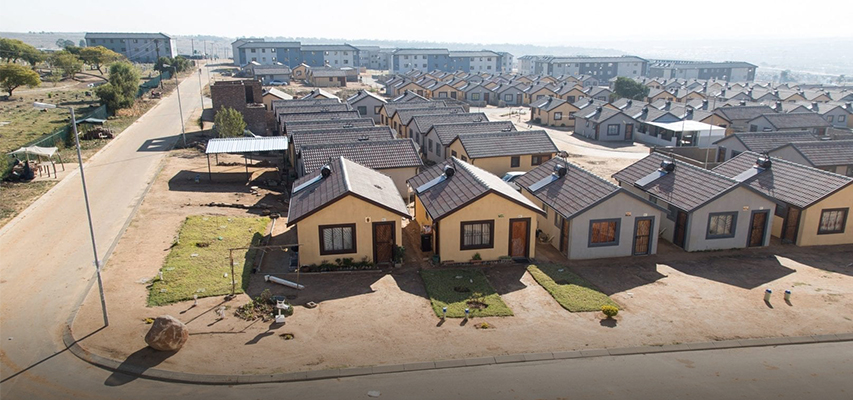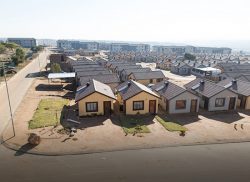
It is only in recent years that the technology has regained traction in the country as the need for speedier and less costly technology becomes urgent
Although prefabricated houses in Kenya have by far been overshadowed by step-wise buildings, they have a long history and huge cost-cutting implications in the country and the region. One of the notable deployment was in the 1990s at Yaya Centre in Nairobi, where the technology was used to construct a carpark.
But it is only in recent years that this technology has regained traction in the country as the need for speedier and less costly technology becomes urgent, especially in urban areas. Nevertheless, in Europe, there was an accelerated growth of 6 percent year-on-year between 2014 and 2017, with Germany leading the way with 25,000 units in 2017. More recently, Your Housing Group of the United Kingdom inked an unprecedented £2.5 billion (about KSh375 billion) deal with the state-owned China National Building Material Company to construct 25,000 houses in the country. North American demand is as picking up well.

The prefab, or the modular housing market, is now forecast to hit $19.5 billion worth (about KSh2.15 trillion) by 2024, with an estimated annual growth of 4 percent from 2019.
In Kenya, the prefabricated technology, or precast method, is approved by the Ministry of Land, Housing and Urban Development, and is thus expected to be crucial in delivering affordable housing. Commonly known as ‘prefabs’, they present great savings to the investors, with most of the material made or prefabricated in the factory. The prefabs, or modular buildings, may range from sections of a building to an entire unit and are much appreciated for their durability too.
The prefabs involve hollowed panels that can be joined, with the building kicking off after supply of materials by the factory. The clients also agree on the design. Normally, the client has the choice of laying the foundation or arranging with the factories for it to be done.
The appropriateness of prefabs is warranted by circumstances, while the suitability is judged according to the structures required.

For one, it will fit in circumstances where similar units are required in small and even large projects, especially offices. This is more so when facades and steel frames would be difficult to be constructed at the building site and thus favour off-site or factory prefabrication.
Again, if the construction site is remote and devoid of onsite facilities like energy source and machinery, it makes more sense to transport partly ready- or fully-fabricated facades to the construction venue. The same might apply to urban areas that do not have enough space for construction activity.
Prefabrication should also be considered where there is an efficient off-site production that preempts the need for significant investment by the contractor and investor.
The time factor equally kicks in. The delivery time, much so for quick turn-around projects, is a huge determinant. A good example is the construction of schools, whose completion usually coincides with the government calendar, and hospitals. This applies as well where space is a constraint.
Adverse weather conditions may prevent long duration of construction while, on the one hand, handling material onsite might incur huge costs, specifically in upmarket urban areas.
As already noted, a key selling-point globally is the savings, with the core-cost centre being the prefabrication factory that is shared by contractors, thus spawning economies of scale for a large customer base.
Secondly, unlike in conventional construction, the cost base is more certain with factory settings, labour and transportation.
Thirdly, construction takes into account the weather conditions, thus enhancing labour productivity and eliminating unbudgeted costs that might come with the disruption of building activity. As the construction industry and Kenya become more litigious, this aspect will come into greater focus to avoid breach of contract on delayed delivery.
A fourth factor that relates to modern contract laws and risks is the safety of workers, which is more guaranteed via prefabrication. With insurance increasingly becoming a necessity, it is important that the workman compensation is factored in the building costs — which reduces in the case of prefabs.
Notably, wastage of material is reduced as facades are made at the factory and delivered to the site, unlike in step-wise construction where waste of sand and cement is frequent. Building blocks and bricks, too, easily crack on site.

Most relevant in the Kenyan market is leakage or theft of material from the supply source to the site, with short measures and diversions dominating here. It should also be noted that sourcing materials is a time consuming and involving exercise for step-wise construction, especially for starters and non-professionals.
In countries like Turkey, which are prone to earthquakes, prefabs have been designed to withstand seismic disturbances.
However, over time, a number of challenges have emerged with prefabrication, key among them being difficulty in renovating this type of building.
That challenge also comes at the design stage where getting the desired structure might be restricted.
Unlike conventional buildings that can be modified on the go, prefabs are hard to change, more so because training on the same is not common in Kenya.
That means future modifications in the building’s functions may not easily take place. The prefabs, beside timber and concrete products, can include boards similar to those used in wrapping electronic and other goods.
In recent years, the State-owned National Housing Corporation (NHC), a key player in the affordable homes project, has emerged a champion of the technology with its Mlolongo, Machakos County, panels factory.
In recent years, the State-owned National Housing Corporation (NHC), a key player in the affordable homes project, has emerged a champion of the technology with its Mlolongo, Machakos County, panels factory. The expanded polystyrene (EPS), with each 1.5 metre by 3 metre costing Sh5,000, saves huge amounts of money and is reported to be quite durable. The work normally includes plastering the walls.
China Wu Yi company is set to be a major player in the sector after investing KSh1 billion in a precast factory at Athi River and has been reported to be investing more in a materials supermarket in the same area. Most of the materials in the supermarket will initially be sourced from China though. The country is the global leader in the manufacture of prefab materials.
There is also a raft of other local players in the industry, including Global Precast Panels, Kenya; Eco Homes; Square Apple and Karmod Prefabricated Buildings.
